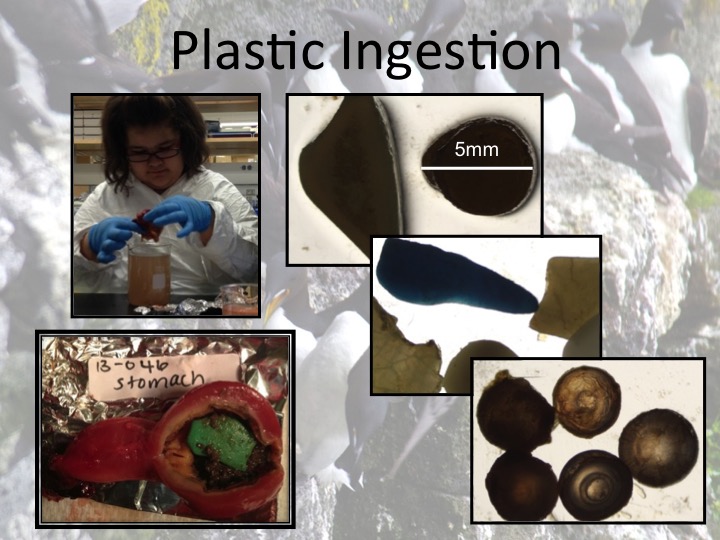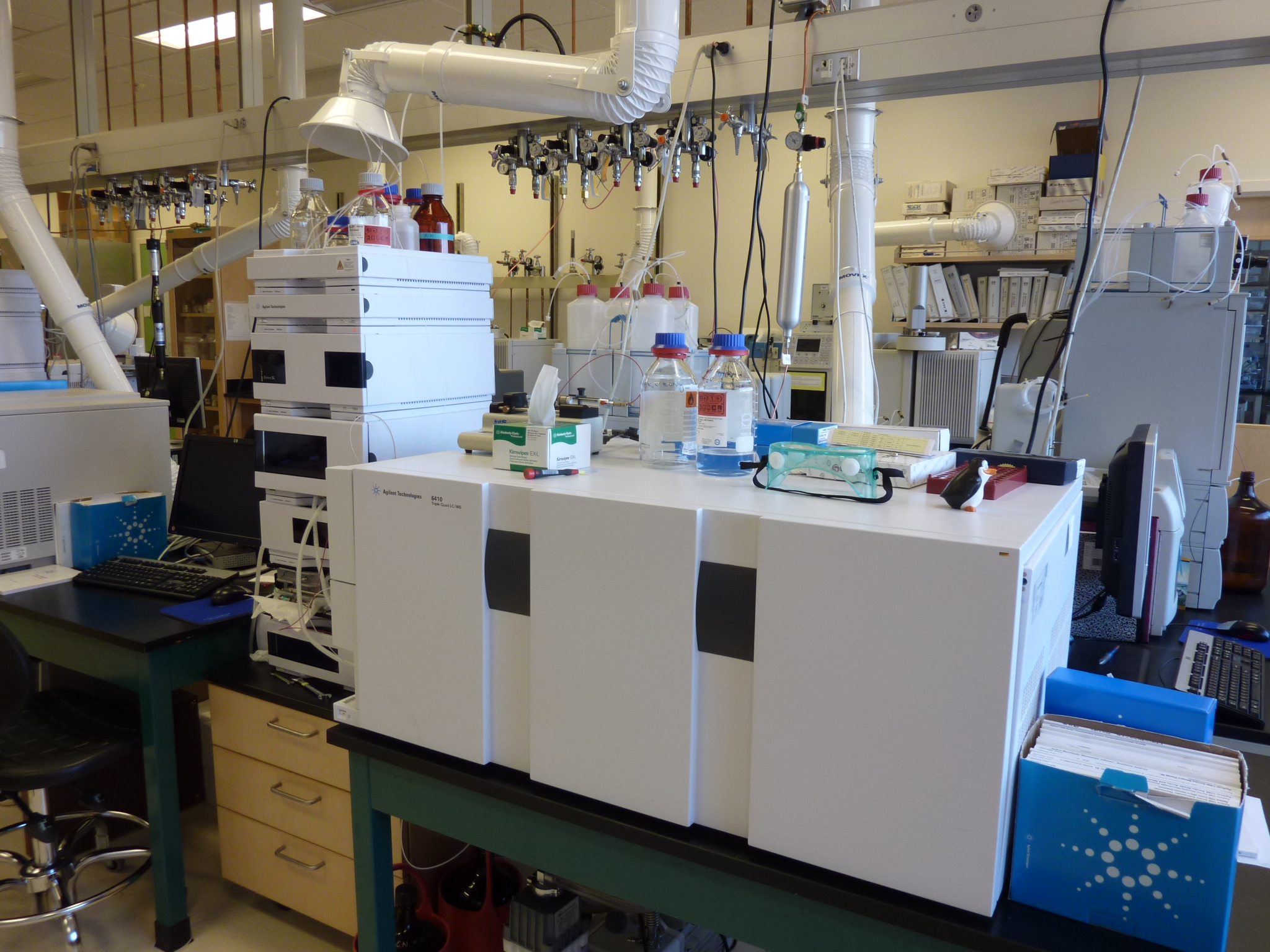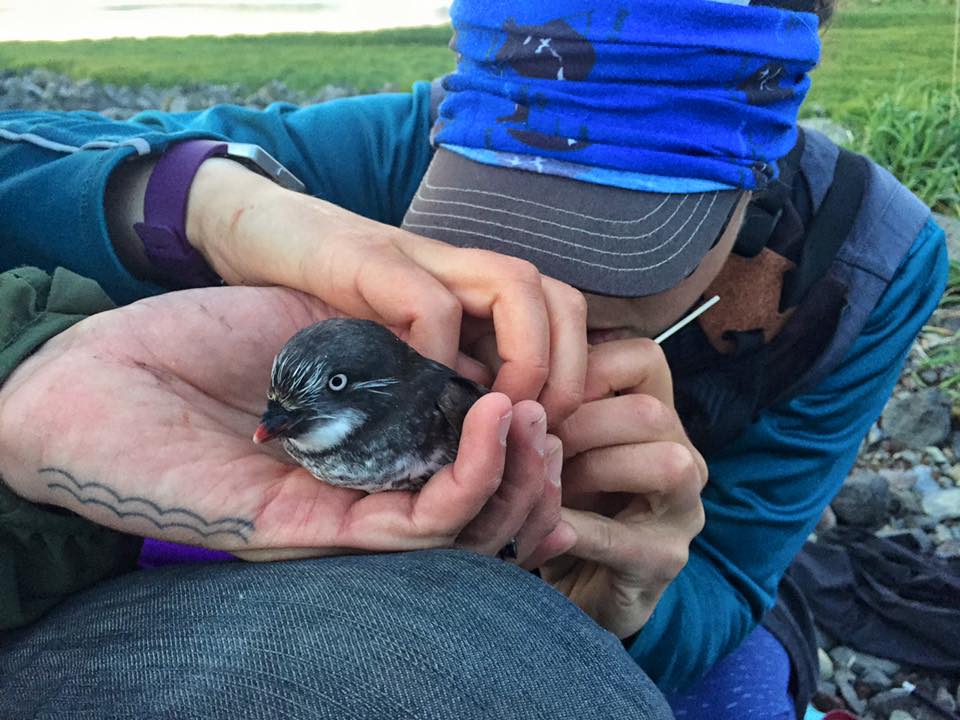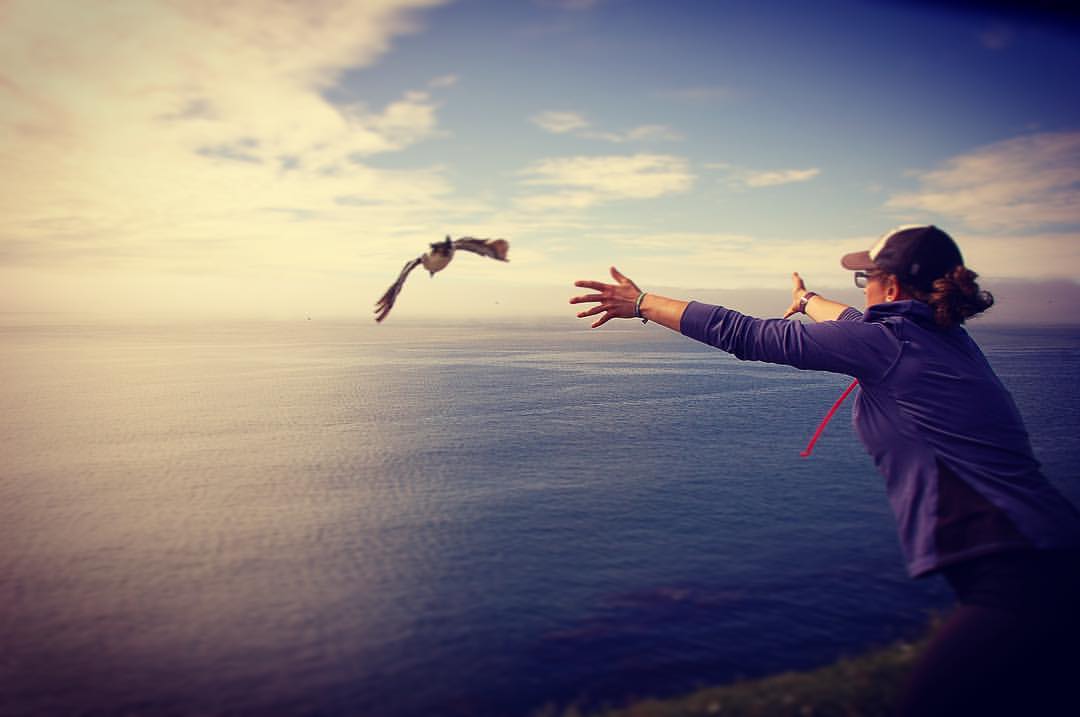Methods
Summary
In the beginning years of our project, we collected whole seabird specimens from remote islands in the Bering Sea, dissected specimens in the laboratory at the University of Alaska Anchorage, and analyzed muscle and reproductive tissue samples for concentrations of six phthalate congeners with liquid chromatography tandem mass spectrometry (LC MS/MS) with atmospheric pressure photo-ionization (APPI). These congeners were DMP (dimethyl phthalate), DEP (diethyl phthalate), BBP (benzyl butyl phthalate), DBP (dibutyl phthalate), DEHP (diethyl hexyl phthalate), and DnOP (di-n-octyl phthalate). A more detailed description of laboratory methods is found in Martins et al. 2015, and you can read more about the ASET lab at this site.
Our preliminary work has detected phthalate concentrations in muscle and reproductive tissues, and other seabird scientists in Australia have detected phthalates in seabird preening oil (Hardesty et al. 2015). Their findings were critical, because preening oil can be collected from live birds, which means we can partner with other scientists to live capture birds in certain regions of the Bering Sea. This year we are collecting preening oil samples from live captured birds in the Pribilof Islands. We used cotton swabs to collect preening oil from the uropygial gland of birds. Funding from this project will help to analyze phthalate concentrations in preening oil samples collected from live captured birds during the summer 2016 field season.



Liquid Chromatograph (Agilent HPLC 1200 series) coupled to a Tandem Mass Spectrometer (Aigilent 6410B LC MS/MS) and Liquid Chromatograph IonTrap (Agilent/Bruker 1300 LC MSn). The LC MS/MS is used to quantify pharmaceuticals, nicotine and cotinine, herbicides, triazoles, phthalates and perchlorates in different matrixes.
Challenges
As phthalates are so pervasive in commonly used materials and the environment, sample contamination may occur at different stages including field sampling, storage, preparation and chromatographic analysis itself; thus, all the steps must be subjected to strict quality control procedures (Net et al. 2015). Upon field collection, we immediately wrapped samples in aluminum foil to reduce phthalate exposure, froze samples, and transferred them to the University of Alaska Anchorage for processing in the laboratory.
The risk of contamination is often high during laboratory analyses, as phthalates could be present in water, organic solvents, ambient air, glassware and plastic material used for the analysis (Marega et al. 2013). We removed plastic materials from the area of the lab where phthalate analyses were performed, and numerous blank samples were tested to assure quality control.
This year we are collecting preening oil samples from live captured birds. We used cotton swabs to collect preening oil from the uropygial gland of birds. One risk factor for us was collecting a large enough oil sample. In some cases, birds were obliging with a preening oil supply, but others were a bit more difficult. The samples have been returned to Anchorage, and future phthalate analyses will let us know if we were able to collect enough preening oil from the birds.


Pre Analysis Plan
Our initial goal is to determine if Bering Sea seabirds are exposed to phthalates by quantifying concentrations in tissues, specifically preening oil tissues for this particular component of the project. We will use a multivariate analysis to test for statistical differences in the average concentrations of each phthalate congener across island groups in the Bering Sea (Aleutians and Pribilofs), and among species of breeding seabirds.
Protocols
This project has not yet shared any protocols.